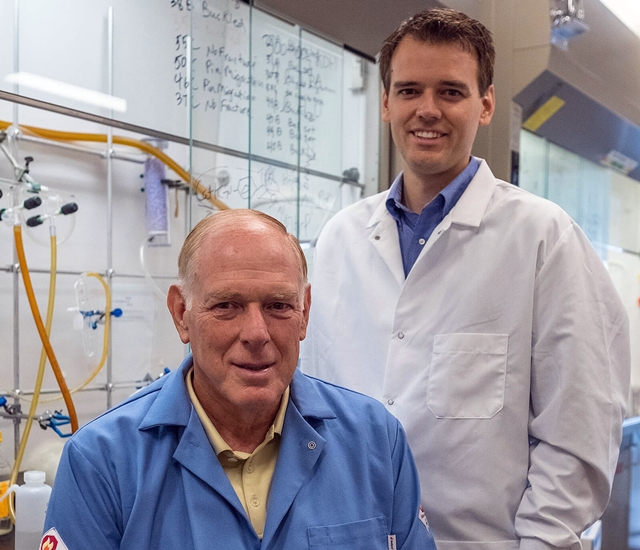18 September 2018. An award from National Institutes of Health is funding development of a new injected drug that promises to repair bone fractures without surgery. The $1.7 million grant from National Institute of Dental and Craniofacial Research, part of NIH, was made to Novosteo Inc. in West Lafayette, Indiana, a spin-off enterprise from Purdue University.
Novosteo, a company founded last year by Purdue chemistry professor Phillip Low and his son Stewart Low, a postdoctoral researcher at Purdue, licenses and commercializes research on techniques to improve treatment of bone fractures, a particular problem in older people. The company cites data showing the rate of hip fractures is expected to increase 160 percent by 2040. In addition, complications from hip fractures can be deadly, with one-third of adults over the age of 50 expected to die within a year after a fall that breaks one or more bones.
“Even with current medical therapies,” says Stewart Low in a Purdue statement, “the odds of making a full recovery are wholly unsatisfactory. Our goal is to provide a better solution for those who suffer and help them more quickly regain their mobility, significantly decreasing the life-threatening complications that besiege those immobilized by their fracture.”
The Novosteo solution uses a small molecule, or low molecular weight compound that limits actions of a protein, known as glycogen synthase kinase 3-beta associated with inflammation. The compound is combined with a peptide in a suspension that targets hydroxyapatite, a crystalline substance in bone exposed when fractured. Because the Novosteo compound reacts only to hydroxyapatite, limiting off-target adverse effects, it can be administered with a simple injection under the skin into the blood stream. When the compound reaches the fracture site in sufficient doses, it begins rebuilding bone tissue and increasing bone density.
In preclinical tests in lab mice induced with broken femur or thigh bones, mice receiving the test compound show more bone repair, with higher bone volume and density than untreated mice. The company says its tests so far show no toxicity of the treatments at dosage levels high enough to repair broken bones.
The Small Business Innovation Research, or SBIR, grant funds research for completing preclinical work by Novosteo to advance its bone-repair technology. SBIR awards are usually given in 2 stages, a first stage to establish feasibility and a second stage to build a working prototype. In this case, NIH awarded Novosteo a fast-track grant that combines the 2 stages, with the first stage optimizing the drug’s efficacy and determining any toxicities, and the second stage completing preclinical development for requesting permission from FDA to begin clinical trials.
Philip Low says Novosteo’s drug can be used to fix more than hip fractures. “We believe the targeted medicine,” notes Low, “may also have applications in dental implants, head and facial fractures, hip and knee replacements and complicated hard-to-heal nonunion or complex fractures and possibly spinal fractures.” Stewart and Philip Low tell more about their work in the following video.
- Engineered Bacteria Studied for Rare Inherited Skin Disorder
- NIH Small Business Grant Funds Severe Hepatitis Treatment
- NIH Grant Funds New Spinal Cord Injury Treatment
- Univ. Spin-Off Developing Long-Lasting Diabetes Drug
- $3.4M NIH Grant Funding New ALS Treatments
* * *


 RSS - Posts
RSS - Posts
You must be logged in to post a comment.